Birds of Sri Lanka
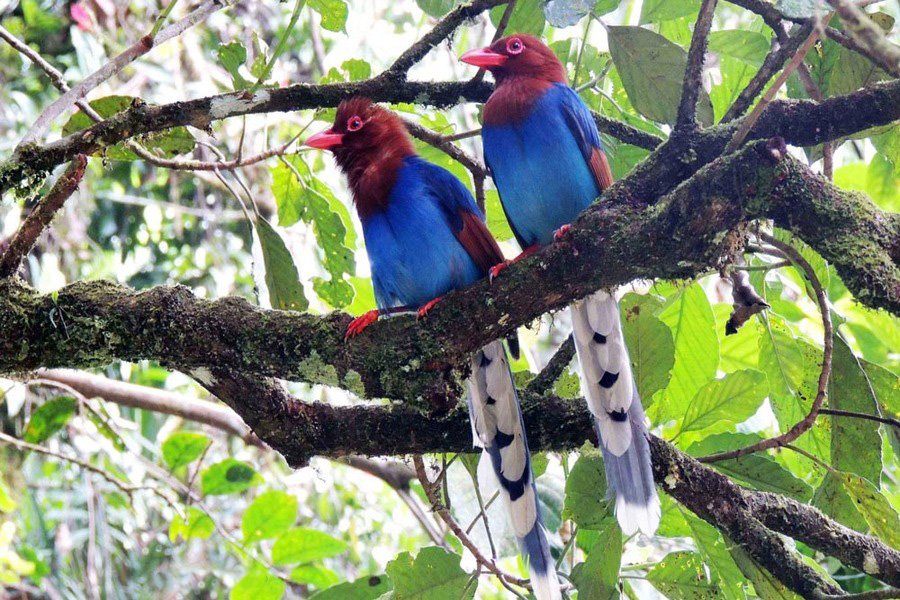
Location : South Asia, Sri Lanka
Coordinates :6°56′N 79°52′E
Avg temperature : 10 c to 35 c
Humidity: 75 % to 95%
Governing: Sri Lanka
Population : 21,893,579
Size : 65610 square Km
Provinces : 09 Provinces
Districts : 25 districts
Introduction to Bird Creation of the world
The creation of birds is a magnificent aspect of nature that captivates many. Birds are the only living species that can fly freely. With over 10,000 species, birds have evolved over millions of years, adapting to various environments worldwide. Their diverse forms, colors, and behaviors exemplify the splendor of avian life.

Evolution of Birds
Birds are believed to have evolved from theropod dinosaurs during the late Jurassic period. This transformation marked a significant moment in biological history. The changes in their anatomy, such as the development of feathers and a lightweight skeleton, facilitated flight. Understanding how birds evolved provides insight into the complexity of nature’s creation.
Bird Habitats and Adaptations
Birds occupy many habitats, from lush forests and arid deserts to urban landscapes. Each species has adapted uniquely to survive in its environment. For instance, ducks are equipped with webbed feet for swimming, while birds of prey have sharp talons for hunting. Studying these adaptations reveals the intricate relationship between birds and their habitats, highlighting the beauty of their creation.
Introduction to Sri Lanka’s Bird Life
Sri Lanka, an island nation in the Indian Ocean, boasts an astonishing variety of bird species that testify to its ecological richness. Spanning approximately 65,610 square kilometers, this vibrant island is home to around 500 recorded bird species, making it a prime location for avian enthusiasts and ornithologists. Sri Lanka’s geographical position, surrounded by rich marine waters and benefitting from a tropical climate, ensures that various habitats, from coastal wetlands to hill country forests, nurture diverse bird populations.

The unique syntonic ecosystem of Sri Lanka is further complemented by its altitude variations, which range from the flat coastal regions to the towering hills of the central highlands. This altitudinal gradient creates distinct microhabitats that support different bird communities, allowing for an impressive array of endemic species, many of which can be found nowhere else on Earth. The island harbors nearly 33 endemic bird species, including the stunning Sri Lanka Blue Magpie and the elusive Sri Lanka Wood Pigeon. These species, along with countless migratory birds that visit annually, highlight the importance of Sri Lanka as a critical stopover point for intercontinental bird migration.

Birdwatching is a popular pastime in Sri Lanka and contributes significantly to the local economy through eco-tourism. Both locals and international visitors flock to key birdwatching hotspots, such as Yala National Park, Kumana National Park, Hortain Plains, Kitulgala, and Sinharaja Forest Reserve, to observe the marvels of bird life there. Natural settings. These activities promote greater awareness of the need for conservation strategies to protect these valuable ecosystems, ensuring that Sri Lanka remains a paradise for birdwatchers for generations.
Endemic birds, Native birds, and Migratory birds in Sri Lanka
Sri Lanka is home to over 500 bird species, including many endemic species.
Endemic birds are found only in a specific geographical area, which can be as small as a single cave or as large as an entire continent. Sri Lanka is home to 34 endemic bird species. These birds are found in the island’s wet and hill zones, with some extending into the dry zone.
A native bird is a bird that is indigenous to a region or ecosystem and the result of natural evolution in that area. Native birds are also known as indigenous or autochthonous species. Sri Lanka has 236 native bird species.
Migratory birds travel long distances to find the best conditions for feeding, breeding, and raising their young. They typically migrate between breeding and wintering grounds, crossing national borders. Sri Lanka has 203 migratory bird species.
This blog post will discuss only endemic birds in Sri Lanka.
Sri Lanka, a beautiful island nation in the Indian Ocean, boasts a rich biodiversity, including many endemic birds. It is home to 34 endemic bird species. Let’s take notes one by one.
Sri Lanka Junglefowl (Gallus lafayettii)
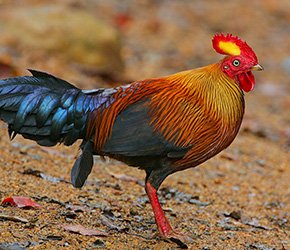
The Sri Lankan junglefowl, also known as the Ceylon junglefowl or Lafayette’s junglefowl, is a member of the Galliformes bird order, which is endemic to Sri Lanka. The national bird of Sri Lanka. The male has orange-red body plumage and dark purple to black wings and tail. The female is brown. The male Sri Lankan junglefowl ranges from 66–72 cm long, resembling a large, muscular rooster. Although usually very shy, in villages around Sinharaja, such as the Peak Wilderness Sanctuary and Wasgamuwa National Park. They have gotten used to human dwellings and can be seen around houses.
Sri Lanka Spurfowl (Galloperdix bicalcarata)

The Sri Lanka spurfowl is a member of the pheasant family endemic to the dense rainforests of Sri Lanka. They are notoriously shy and will disappear at the slightest disturbance. Capturing details in the gloom of the rainforest floor adds another challenge. The Sri Lanka spurfowl is a 37 cm long bird. Both sexes have brown upperparts, wings, and tails. The males exhibit vivid crimson-red legs, bare facial skin, and striking black and white dorsal plumage that extends to their heads. There is also extensive white oscillation on the sepia wings and upper back. Lives mainly in pairs. Kitulgala and Sinharaja are two of the best locations for the elusive bird.
Sri Lanka Wood Pigeon (Columba torringtoniae)
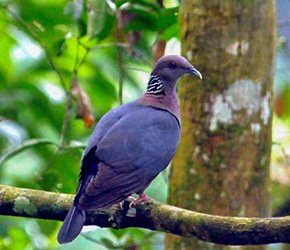
The Sri Lankan wood pigeon is an endemic resident breeding bird in the mountains of Sri Lanka. It is 36 cm in length. Its upperparts and tail are dark grey, and the head and underparts are lilac, becoming paler on the belly. The nape has a black-and-white chessboard pattern. It is found in primary montane forests and can be quite easily seen in the woods of the Horton Plains National Park.
Sri Lanka Green Pigeon (Treron pompadora)

Sri Lanka green pigeon is a pigeon in the genus Treron found in Sri Lanka. It is 28 cm long and usually occurs singly or in small groups. Its flight is fast and direct, with the regular beats and an occasional sharp flick of the wings that are characteristic of pigeons. This handsome but smaller pigeon is by far the most familiar of the green pigeons, occurring almost throughout the entire low country and ascending the hills to about 1000 meters or sometimes even higher. It lives in forests and home gardens. This arboreal pigeon lives in small flocks and moves about a good deal. Kitulgala, Sinharaja and Udawalawe are places where this bird can be seen easily.
Green-billed Coucal (Centropus chlororhynchos)

The green-billed coucal is a member of the cuckoo family. It is endemic to Sri Lanka’s wet zone and listed as Vulnerable on the IUCN Red List, as its small population has declined due to forest destruction and fragmentation. It is a medium to large bird at 43 cm. Its head and body are purple-black, the wings are maroon above and black below, and the long tail is dark green. The bill is a distinctive light green. Sexes are similar, but juveniles are duller and streaked. A rare bird that inhabits the dense undergrowth of wet zone forests with dwarf bamboo. Occasionally, we can see home gardens adjacent to these forests, which are elusive. Lives in pairs. Kitulgala and Sinharaja are again the best locations.
Red-faced Malkoha (Phaenicophaeus pyrrhocephalus)

The red-faced malkoha is a member of the cuckoo order of birds, the Cuculiformes. This malkoha species is endemic to Sri Lanka. Another forest dweller has very arboreal habits. Not familiar by any means. It is found primarily in undistributed wet zone forests and in a few of the tall riparian forests of the drier parts. This is a large species at 46 cm with a long-graduated tail. Its back is dark green, and the upper tail is green-edged with white. Sexual dimorphism is present where males have dark brown iris, and females have a creamy white iris. Juveniles are with much duller plumage. It is found mainly in the regions from lowlands to the mountainous areas. It is known to inhabit dense forests and is primarily confined to the Sinharaja Rain Forest, Morapitiya Forest Reserve, and The Peak Wilderness Sanctuary.
Sri Lanka Hanging Parrot (Loriculus beryllinus)

The Sri Lanka hanging parrot is a small endemic breeder in Sri Lanka. It is 13 cm long and has a short tail. The adult has a red crown and rump. The nape and back have an orange tint. The chin and throat are pale blue. The beak is red, and the irises are white. It is lived everywhere in the hills up to about 1300 meters in low country wet zones. Like other Sri Lankan parakeets, this is a green bird with a short tail. A relatively common small bird lives in forested areas, home gardens, and plantations. Usually lives singly or in pairs and sometimes in small parties. Kandy, Kitulgala and Sinharaja are the best areas to spot this bird.
Layard’s Parakeet (Psittacula calthrapae)

Layard’s parakeet is a parrot that is a resident endemic breeder in Sri Lanka. It is a green parrot, 29 cm long, with a tail up to 13 cm. The adult has a bluish-grey head and back, separated by a green collar. There is a broad black chin stripe, and the tail is blue-tipped yellow. The upper mandible of the male’s bill is red, and the lower mandible is brown. Layard’s Parakeet also inhabits the same areas as the preceding species. Smaller numbers occur in the drier parts of the hills (on the eastern slopes) and adjacent foothills. Usually, they live in pairs and sometimes in small flocks. Kandy, Kitulgala, and Sinharaja are their favorite haunts.
Serendib Scops Owl (Otus thilohoffmanni)
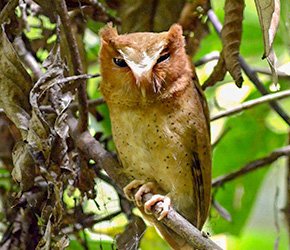
The last new endemic species to be added to the list of endemic birds of Sri Lanka. The general color of this 16.5 cm long, short-tailed owl is reddish-brown with paler underparts, spotted all over with fine black markings. It was initially discovered in the Kitulgala rainforest by prominent Sri Lankan ornithologist Deepal Warakagoda. Six years later, he finally saw it on 23 January 2001 in Sinharaja, and it was formally described as a species new to science in 2004. Apart from Sinharaja and Kitulgala, it has also been found at Runakanda Reserve in Morapitiya and Eratna Gilimale.
Chestnut-backed Owlet (Glaucidium castanotum)

The chestnut-backed owlet is endemic to Sri Lanka. The chestnut-backed owlet is small and stocky, measuring 19 cm in length. It resembles the jungle owlet in shape, size, and appearance, but the upperparts, scapulars, and wing coverts are mainly chestnut brown, with darker barring. It is a relatively rare owlet of the wet zone forests that does not ascend higher hills. Lives in pairs and often can be heard and, hence, located during the time. Does not hesitate to come into well-wooded human habitations, sometimes even nesting in them. Kitulgala, Dombagaskanda, and Sinharaja are some locations where it could be seen.
Sri Lanka Grey Hornbill (Ocyceros gingalensis)

The Sri Lanka grey hornbill is a bird in the hornbill family and a widespread endemic resident breeder in Sri Lanka. The Sri Lanka grey hornbill is a large bird 45 cm long. It has grey wings with black primary flight feathers, a grey back, and a brown crown. Its long tail is blackish with white sides, and the underparts are white. The long, curved bill has no casque. A locally common bird in all low country forests, well-wooded areas, and gardens. It occurs in wet and dry zones and occasionally ascends the hills to about 1300 meters. It lives in pairs or small flocks, like most hornbills. The female imprisons herself in a tree hole for incubation during the breeding season. Kitulgala is among the best places to see this bird.
Crimson-backed Woodpecker (Chrysocolaptes stricklandi)

The crimson-backed flameback is a species of bird in the woodpecker family Picidae that is endemic to Sri Lanka. 33 cm in length, this woodpecker looks slightly more prominent and can be distinguished from that species by its crimson back and wings, longer ivory color break, and different call notes. It is found throughout the island but prefers the mountainous regions in the wet zone. Its regular habitats are forests and heavily wooded areas. This bird can be observed in the Mitirigala Forest Reserve, Kitulgala Forest Reserve, The Peak Wilderness Sanctuary, Bodhinagala Forest Reserve, Morapitiya Forest Reserve, Sinharaja Rain Forest, Kanneliya Forest Reserve, Hiyare Forest Reserve, Udawalawe National Park, Horton Plains National Park, Hakgala Botanic Gardens, Udawattekele Forest Reserve, Riverstone area and the Wasgamuwa National Park.
Red-backed Flameback (Dinopium psarodes)

The Red-backed flameback, also known as the Lesser Sri Lanka flameback, is a species of bird in the family Picidae endemic to Sri Lanka. About 28 cm in length. Mostly crimson with black trailing edges to wings. Underparts white with messy black marks. The breast and neck are black with white spots on the throat and white streaks on the breast. Its natural habitats are subtropical or tropical dry forests, subtropical or tropical moist lowland forests, and subtropical or tropical mangrove forests, including manmade environments like home gardens. It can be seen from 1,500 m away. Primarily found in the dry zone but likes humid environments.
Yellow-fronted Barbet (Megalaima flavifrons)

The yellow-fronted barbet is Asian, an endemic resident breeder in Sri Lanka. It has green plumage with a yellow crown and blue patches below the eyes, on the throat, and the chin. It is 21–22 cm long. Its incessant call is the trademark of the wet zone forest. Though more partial to heavy forests, they like wooded home gardens. The call is audible over a fair distance. In Sinharaja, it can be seen as a regular member of the mixed feeding flocks. Udawattakele in Kandy is one of its best haunts.
Sri Lanka Small Barbet (Xantholaema rubricapillus)

Sri Lanka Small Barbet is an Asian barbet endemic to Sri Lanka. The crimson-fronted barbet has mainly green plumage and wings, a blue band down the side of the head and neck, and a black crescent behind the eye. It is 15 cm long with a short neck, large head, and short tail. It is widely found in the wet zone of the low country going up to the mid-hills. It can be seen very rarely in the dry zone. This bird can be observed in the Peak Wilderness Sanctuary, Bodhinagala Forest, Morapitiya Forest Reserve, Sinharaja Rain Forest, Kanneliya Forest Reserve, and the Udawattakele Forest Reserve.
Sri Lanka Blue Magpie (Urocissa ornate)

The Sri Lanka blue magpie, or Ceylon magpie, is a brightly colored member of the family Corvidae found exclusively in Sri Lanka. The Sri Lanka blue magpie measures 42–47 cm in length and is more significant than a mynah but smaller than a crow, with a sturdy bill. Its plumage is bright blue, with a reddish-brown or chestnut head, neck, and wing. The blue tail is long and graduated, with a white tip. This species’ bill, legs, feet, and featherless eye rings are vibrant red. It is a crow family member residing in the dense green wet zone, temperate rain forest, mountain forests, and damp zone foothills. The bird can be observed in the Sinharaja Rain Forest and the Kitulgala Forest Reserve, The Peak Wilderness Reserve, the Hakgala Botanical Gardens, and the Morapitiya Forest Reserve.
Black-headed Yellow Bulbul (Pycnonotus melanicterus)

The black-headed yellow bulbul is a member of the bulbul family of passerine birds. It is endemic to Sri Lanka. It is 19 cm in length. The black-capped bulbul is virtually crestless and has a yellow throat and brownish eyes. It is yellowish green above and yellow below. The tail is brownish and ends with a white tip. This resident breeder is usually seen in pairs and found abundantly in the wet zone and from the lowlands to mid-mountainous areas. This bird can be observed in the Mitirigala Forest Reserve, Kitulgala Forest Reserve, The Peak Wilderness Sanctuary, Bodhinagala Forest, Morapitiya Forest Reserve, Sinharaja Rain Forest, Hiyare Forest Reserve, Udawalawe National Park, and the Wasgamuwa National Park.
Yellow-eared Bulbul (Kelaartia penicillate)

The yellow-eared bulbul is a songbird species in the bulbul family of passerine birds. It is an endemic resident breeder in the highlands of Sri Lanka. The yellow-eared bulbul is about 20 cm in length, with a long tail. It has olive upperparts and yellowish underparts. The head’s crown is grey, with yellow ear tufts and a yellow patch below the eye. A white tuft is in front of the eye, and the throat is also white. It is a resident breeder in the wet lowlands to the mid-hills and dwells in forests, woodlands, and extensive gardens. The bird can be observed in the Kitulgala Forest, The Peak Wilderness Reserve, Bodhinagala Forest, Morapitiya Forest Reserve, Sinharaja Rain Forest, Kanneliya Forest Reserve, and the Hiyare Forest Reserve.
Sri Lanka Crested Drongo (Dicrurus lophorinus)
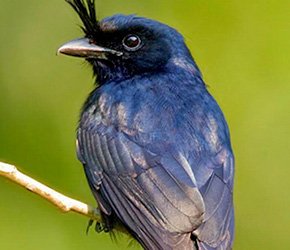
The Sri Lanka crested drongo is a species of bird in the family Dicruridae. It is endemic to Sri Lanka. 32 cm in length. The frontal crest, glossy black plumage, and long, deeply forked tail without the rackets make it easy to identify. A very vocal mimic that imitates a variety of birds. It is a breeding resident commonly found in subtropical and tropical moist lowland forests situated in the wet zone and humid montane forests in the mid-mountainous regions and sometimes even higher. They are known to dwell in dense forests, especially rainforests. This bird can be observed in the Bodhinagala Forest Reserve, The Peak Wilderness Sanctuary, Morapitiya Forest Reserve, Sinharaja Rain Forest, Kanneliya Forest Reserve.
Sri Lanka Bush Warbler (Elaphrornis palliseri)
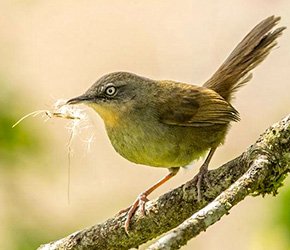
The Sri Lanka bush warbler is an old-world warbler, an endemic resident breeder in Sri Lanka. At 14 cm, it is a medium-large warbler. The adult has a plain brown back, pale grey underparts, a broad tail, and short wings. There is a weak supercilium, and the throat is tinged orange. Like most warblers, the sexes are identical, but young birds lack throat coloration. Nuwara Eliya and Horton Plains are the best locations to see this rare bird.
Brown-capped Babbler (Pellorneum fuscocapillus)

The brown-capped babbler is an endemic resident breeding bird in Sri Lanka. At 16 cm, it is small to medium-sized and has a long tail. It is brown above and rich cinnamon below, and its crown is dark brown. It is found throughout the island, usually where there is forest cover. This includes the mountainous regions with an elevation up to 5,500 ft above sea level, excluding arid areas of the Northern and Southern regions. This bird can be observed in the Mitirigala Forest Reserve, Kitulgala Forest Reserve, The Peak Wilderness Sanctuary, Bodhinagala Forest, Morapitiya Forest, Sinharaja Rain Forest, Kanneliya Forest Reserve.
Sri Lanka Scimita-babbler (Pomatorhinus melanurus)

T
he Sri Lanka scimitar babbler is an Old-World babbler endemic to the island of Sri Lanka. 22 cm in length. This very vocal, attractive, slender babbler has a long yellow down-curved bill, a long white eyebrow extending onto the nape, and a black eye stripe. The upper parts are rusty brown with a dark brown crown, and the underparts are white with brown flanks, vents, and undertail coverts. Lives in Forests, densely wooded areas, scrublands, and home gardens. This bird can be observed in the Kitulgala Forest Reserve, The Peak Wilderness Sanctuary, Morapitiya Forest Reserve, Sinharaja Forest Reserve, Kanneliya Forest Reserve, Horton Plains National Park, and the Udawattakele Forest Reserve.
Orange-billed Babbler (Turdoides rufescens)

The orange-billed babbler is a resident breeding bird endemic to Sri Lanka. It is a large babbler species 25 cm in length. The rufous babbler is distinguishable from other babblers by its rufous coloration and bright orange bill and legs. It is found in the wet lowland rainforests and the surrounding hills. The bird can be observed in the Sinharaja Rain Forest and the Kitulgala Forest Reserve.
Ashy-headed Laughingthrush (Garrulax cinereifrons)
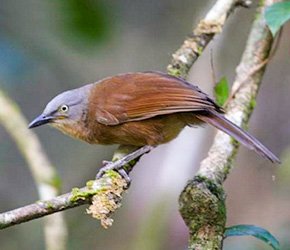
The ashy-headed laughing thrush is a resident breeding bird endemic to Sri Lanka. It is 23 cm in length with a long, floppy tail. It is rufous brown above and deep buff below, with a grey head and white throat. It is one of the most challenging species to find, but when seen, it is found in small groups near the ground and in the lower layers of dense forests from the lowlands to the mountain foothills. It can be observed in the Sinharaja Forest.
Sri Lanka White-eye (Zosterops ceylonensis)

The Sri Lanka white-eye is a small passerine bird in the white-eye family endemic to Sri Lanka. It is slightly larger than the Indian white-eye and about 11 cm long. The upper parts of the body and sides of the neck are dark olive-green. The rump appears paler green, while the crown and forehead appear darker. The wings and tail are brown-edged and green on the back. Nuwara Eliya and Horton Plains are two of the best sites for this species.
Sri Lanka Hill Myna (Gracula ptilogenys)

The Sri Lanka hill myna is a starling family member and endemic to Sri Lanka. These 25 cm long birds have green-glossed black plumage, purple-tinged on the head and neck. Sizeable white wing patches are evident in flight. The strong legs are bright yellow, and yellow wattles are on the nape. It is typically found in forests and cultivated lands and is famed for its melodious call. Mainly found in the wet zone mountainous regions at 6000 ft above sea level, being the rarest in the highest hills. It is frequently seen in forests and wooded areas. This bird can be observed in the Mitirigala Forest Reserve, Udawattakele Forest Reserve, and Bodhinagala Forest.
White-faced Starling (Sturnornus albofrontatus)

The white-faced starling is a member of the starling family of birds and an endemic resident breeder in Sri Lanka. The adults of these 22 cm long birds have green-glossed dark grey upperparts and whitish underparts. The head is paler than the underparts. The sexes are similar, but juveniles are duller, with brown upperparts and greyer underparts. It is found in the wet lowlands and hills in the vicinity, commonly inhabiting tall forests high in the canopy. This bird can be observed in the Sinharaja Rain Forest.
Sri Lanka Whistling Thrush (Myophonus blighi)

The Sri Lanka whistling thrush is a member of the family Muscicapidae and a resident endemic bird of Sri Lanka. It is a small whistling thrush at only 20 cm. The adult males are dark blue with a darker head and back. There are bright blue patches on the shoulders, supercilia, and forehead. The female is brown above and chestnut below but has a bright blue shoulder patch like the male. This resident breeder is usually seen in pairs and found abundantly in the wet zone and from the lowlands to mid-mountainous areas. This bird can be observed in the Mitirigala Forest Reserve, Kitulgala Forest Reserve, The Peak Wilderness Sanctuary, Bodhinagala Forest, Morapitiya Forest Reserve, Sinharaja Rain Forest, Udawalawe National Park, and the Wasgamuwa National Park.
Spot-winged Thrush (Geokichla spiloptera)

The spot-winged thrush is a group within the large thrush family Turdidae. It is an endemic resident breeder in Sri Lanka. Adults of this medium-sized thrush, which measures 21 to 27 cm long and light brown above with a double wing bar of white spots. The pale face has two dark bars. The underparts are white with heavy spotting. The bill is black, and the legs are yellow. The song is a rich and varied whistling. It is a resident breeder in the wet zone lowlands up to the higher mountainous regions. It is found to frequent mountainous rainforests and is rarely seen in the dry zone woodlands. This bird can be observed in the Peak Wilderness Sanctuary, Morapitiya Forest Reserve, and Sinharaja Rain Forest.
Sri Lanka Scaly Thrush (Zoothera imbricata)

Sri Lanka scaly thrush is a member of the thrush family Turdidae. It is an endemic resident breeder of Sri Lanka. 26-27cm large brown thrush species with a long beak, black scales spread over its body, and a brown abdomen. It resides in evergreen rainforests, densely wooded areas, plantations, and parks. This bird can be observed in the Sinharaja Rain Forest and the Peak Wilderness Sanctuary.
Dull-blue Flycatcher (Eumyias sordidus)

The dull-blue flycatcher is a small passerine bird in the flycatcher family Muscicapidae. It is 15 cm long and is an endemic resident breeder in the hills of central Sri Lanka. It is similar in shape to the spotted flycatcher and has a loud, melodic song. Adults are ashy blue with a whitish belly. A black patch between the broad black bill and the eye is bordered with brighter blue above and below. A resident breeder confined to the hilly regions above 650 meters from sea level, not ordinary below 900 meters. Inhabits mountain forests, well-wooded areas, and home gardens with plenty of shade and seclusion. The bird can be observed in the Horton Plains National Park, the Peak Wilderness Sanctuary, and the Riverstone area.
White-throated Flowerpecker (Pachyglossa vincens)

The white-throated flowerpecker is a small passerine bird. It is an endemic resident breeder in Sri Lanka. This is a very small passerine but a relatively stout flowerpecker, measuring 10 cm in total length with a short tail, short, thick, curved bill, and tubular tongue. A resident breeding species commonly found in wet lowlands and mid-zone hills, rarely reaching higher hills. They are known to live in forests, well-wooded habitats, and home gardens. This bird can be observed in the Kitulgala Forest Reserve, The Peak Wilderness Sanctuary, Bodhinagala Forest Reserve, Morapitiya Forest Reserve, Sinharaja Rain Forest, and Kanneliya Forest Reserve.
Sri Lanka Woodshrike (Tephrodornis affinis)

The Sri Lanka wood shrike is an endemic bird of Sri Lanka in the family Vangidae. It is a small 18 cm gray bird with a thick beak, a black mask, and white eyebrows. It is a commonly found breeding resident in dry lowlands, scattered areas of the wetlands up to the mid-mountainous regions. This bird can be observed in the Udawalawe National Park, Kalametiya Sanctuary, Bundala National Park, Kirindha Palatupana Wetlands, Yala National Park, Nilgala Forest Reserve, and Galoya National Park, Kumana National Park, Sigiriya Sanctuary, Anawilundawa Sanctuary, and the Wilpattu National Park.
Sri Lanka Swallow (Cecropis hyperythra)

The Sri Lanka swallow is a resident breeder endemic to Sri Lanka. This swallow species has a deep chestnut-colored belly and lower back, with a profoundly notched forked tail. 16 – 17 cm in length, it is a large swallow with a tail that forks deeply, and the combination of deep rufous underside and navy-blue rump without any marks is a unique feature of this species. It is well distributed throughout the island and can be seen in the forest edges, plantations, paddy fields, grasslands, and home gardens. The bird can be best observed at the Talangama Tank.
Sri Lanka shama (Copsychus leggei)
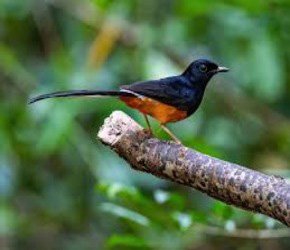
The Sri Lanka shama is a medium-sized passerine bird in the Old-World flycatcher family Muscicapidae endemic to Sri Lanka. This is a 35th and recently added bird to the endemic birds of Sri Lanka. It is 23–28 cm long and has glossy blue-black upperparts, bright chestnut underparts, a white rump, and white outer tail feathers. The bird can be best observed in Yala National Park, Sri Lanka, Thissamaharama, Hambantota, Udawatta Kele Sanctuary, and Wilpattu National Park.
Those are the endemic birds of Sri Lanka.
Conservation Challenges
Despite their uniqueness, endemic birds in Sri Lanka face several threats, including habitat destruction, climate change, and invasive species. Conservation efforts are crucial for safeguarding these avian treasures and maintaining ecological balance. Organizations are working tirelessly to create protected areas and raise awareness about the importance of preserving these unique bird populations.
To combat these challenges, governmental bodies and non-governmental organizations (NGOs) actively engage in bird conservation efforts across Sri Lanka. The Department of Wildlife Conservation (DWLC) has established protected areas and national parks that are safe havens for numerous endemic and migratory birds. These protected regions preserve natural habitats and promote eco-tourism, raising awareness and funding conservation activities.
Top Birdwatching Locations in Sri Lanka
Sri Lanka is renowned for its rich biodiversity and serves as a sanctuary for an extensive range of bird species, making it a coveted destination for birdwatchers. Among the numerous locations ideal for observing these avian wonders, several stand out for their unique environments and remarkable biodiversity.

Yala National Park is one of the most prominent birdwatching spots in Sri Lanka. This park is famous for its leopards and hosts over 200 recorded bird species. The diverse ecosystems within Yala, ranging from scrublands to wetlands, provide habitats for numerous birds. Early morning or late afternoon excursions are recommended for optimal sightings since many birds are most active during these incredible hours. Birdwatchers may encounter species such as the Eurasian Spoonbill and the Black-crowned Night Heron among the park’s striking landscapes.
We have written a blog post about Safari in Yala National Park for those interested. The link follows immediately. https://pantheratravels.com/yala-safari/

Another noteworthy site is the Sinharaja Forest Reserve, a UNESCO World Heritage Site boasting a treasure trove of endemic birds. This tropical rainforest is home to species such as the Sri Lanka Blue Magpie and the Sri Lankan Spurfowl. The dense foliage creates a unique habitat that supports migration and breeding, shaping an ideal setting for birdwatchers. Guided tours are available, and employing a local guide can enhance the experience by increasing the chances of spotting elusive species and understanding local avian behaviors.

In addition to Yala and Sinharaja, other recommended locations include Udawalawe National Park, known for its open grasslands and waterholes that attract birds like the Lesser Adjutant Stork, and Bundala National Park, a haven for migratory birds. Various observation points within these reserves offer prime views and photography opportunities. Whether an amateur or a seasoned birder, planning trips during the dry season enhances the likelihood of successful sightings in these magnificent locations.
Birdwatching Tips and Ethics
Engaging in birdwatching in places like Sri Lanka, renowned for its rich avifauna, requires passion, the right approach, and equipment. First and foremost, investing in essential birdwatching gear can significantly enhance your experience. A good pair of binoculars is critical. Typically, models with an 8×42 magnification balance distance and field of view. Additionally, a field guide specific to Sri Lanka’s birds can serve as a valuable reference, aiding recognition and understanding of various species. Choosing appropriate clothing is also essential; neutral-colored attire allows for better camouflage, reducing bird disturbances and ensuring a more immersive experience.
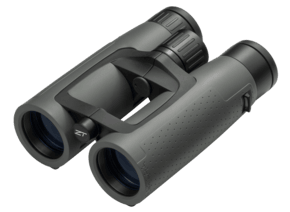
Employing effective techniques can significantly improve your observation outcomes while minimizing stress on wildlife. Patience is paramount. Finding the right spot and quietly waiting can often yield remarkable sightings. Utilizing the early morning hours usually allows birdwatchers to observe more activity, as many species are more vocal and visible during this time. Furthermore, moving slowly and deliberately can prevent startling nearby birds, increasing the likelihood of close encounters.
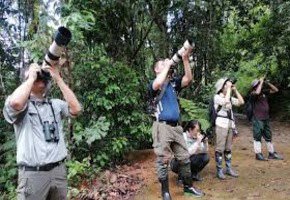
Equally important are the ethical considerations surrounding birdwatching. Respect for wildlife and natural habitats must be at the forefront of any birdwatching activity. Maintain a safe distance from nesting sites and avoid causing undue stress to the birds or their environment. It is also crucial to tread lightly and minimize littering, as preserving the integrity of these ecosystems benefits both the local avifauna and future birdwatchers. Following these tips enriches one’s experience and contributes to the sustainability of birdwatching as a beloved pursuit for generations to come.

Hope you enjoyed the article. You can scroll down to our featured posts. Before you go to featured posts, Subscribe to read our new posts. We never use this email for promotions and offers. Our only purpose is for you to read our valuable content.
Featured Blog Posts

- Featured, Places

- Featured, Places

- Featured, Travel tips

- Featured, Places

- Activities, Featured

